The annual temporary arts pavilion makes its first foray outside of the UK in Beijing. Designed by Liu Jiakun, the structure has a barely contained energy that’s the result of cutting-edge mechanics.
This year marks a new chapter in the Serpentine Pavilion’s journey: it’s the first year that the pavilion comes to Asia, and indeed, it’s the first year the pavilion appears anywhere outside of the UK. This year’s international pavilion opened on 29 May 2018, located on the green expanse in front of WF CENTRAL, Hongkong Land’s premium mixed-use development in Dongcheng District, Beijing.
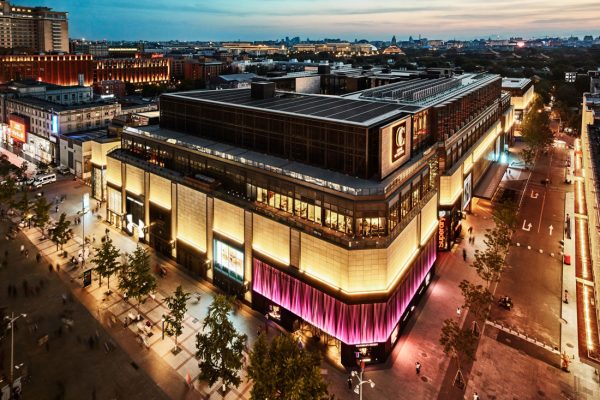
The Serpentine Pavilion has been an annual fixture on the London summer arts scene, eagerly anticipated for the experiment approach each year’s commissioned international architecture firm will apply. Conceived by the Serpentine Galleries and launched in 2000, the pavilion has seen architects like Bjarke Ingels Group (BIG), Sou Fujimoto, Herzog & de Meuron, Rem Koolhaas and many others think outside the box to create temporary structures that invite people to engage with them and to take a different perspective.
For the first pavilion in China, the Serpentine Galleries sought the help of Liu Jiakun, Principal of JIAKUN Architects. Jiakun’s creation draws on the heritage of the Wangfujing area, as well as the 18-year history of the Serpentine Galleries.
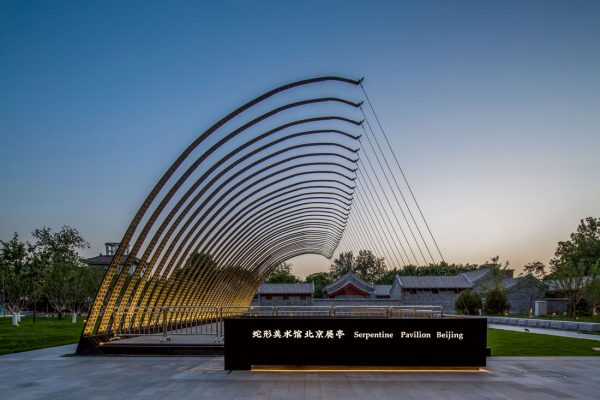
“Working on the Serpentine Pavilion meant completing a project that requires a high-standard creativity in a limited time. Working on it in China, for me, means doing something that embodies both the Chinese spirit and a universal language,” says Jiakun.
To give the pavilion that ‘Chinese spirit’, Jiakun designed a dynamic form that resembles an archer poised to shoot an arrow from his bow. “The mechanical installation demonstrates a new structural concept: a series of layered spring steels, stacked thick at the bottom and thinner at the top, connected by bolts that play the role of ‘bow’.
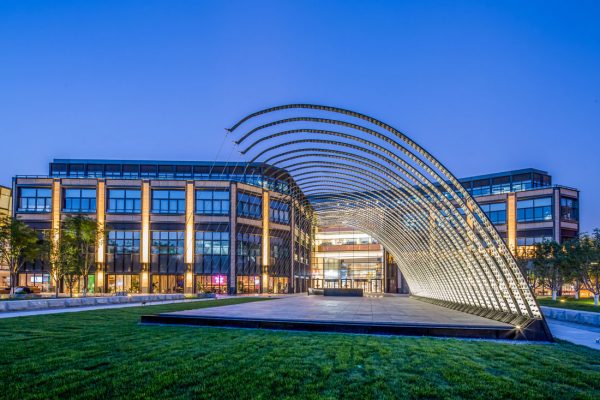
Explains Liu, “Cables that work as ‘string’ pull the bow back, with the support of steel beams at the bottom as the ‘arrow’, to maintain balance. The elasticity and tension from the materials form an unsupported, self-stabilising structure that is full of inner energy.”
Powerful movement and balance: these elements counter each other in Jiakun’s thoughtful and precise design, making Beijing’s first Serpentine Pavilion a physical embodiment of junzi, a Confucian concept pursued by the “superior man,” says Jiakun.
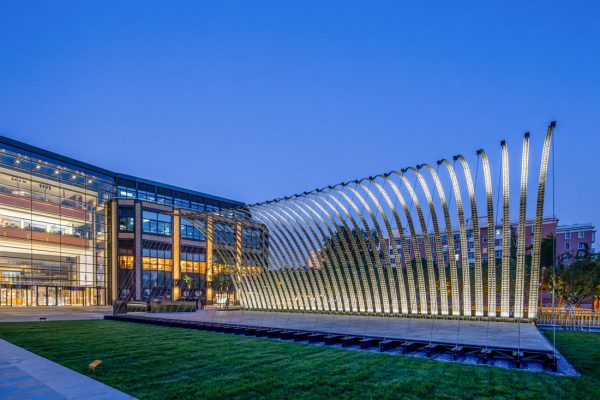
The architect also drew on the form and materials of the nearby Forbidden City, paying tribute to China’s heritage. He used “jin zhuan, a special floor tile used for the Forbidden City in ancient China and fired in the southern region of the Yangtze River,” he says, and he referenced the arched forms of the Forbidden City’s roofs. “In line with the architectural design of the Forbidden City, we used anti-warping methods, echoing the cornices of China’s traditional roofs.”
The resulting structure is dynamic and beautiful in its apparent simplicity – and yet Jiakun says the sense of movement was harder to achieve than it looks. He explains, “The new structural mechanics, the ‘bow-arch structure’… seems simple, but actually, it required calculations and testing at every step of the way.”
INDESIGN is on instagram
Follow @indesignlive
A searchable and comprehensive guide for specifying leading products and their suppliers
Keep up to date with the latest and greatest from our industry BFF's!

For Aidan Mawhinney, the secret ingredient to Living Edge’s success “comes down to people, product and place.” As the brand celebrates a significant 25-year milestone, it’s that commitment to authentic, sustainable design – and the people behind it all – that continues to anchor its legacy.

The undeniable thread connecting Herman Miller and Knoll’s design legacies across the decades now finds its profound physical embodiment at MillerKnoll’s new Design Yard Archives.

As French-Lebanese Architect Lina Ghotmeh prepares for lectures in Melbourne and Sydney, we hear about the philosophy shaping her internationally celebrated practice.

Re/place has been installed for this year’s Albury Summer Pavilion! Studio Chris Fox has partnered with Bollinger+Grohmann engineers, the University of Sydney and Swinburne University of Technology to create this temporary installation with an experimental approach to materials and circular economy.
The internet never sleeps! Here's the stuff you might have missed
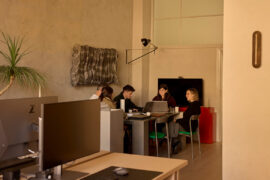
Founded by Ana Ćalić McLean and Josh McLean, In Addition is a design studio creating thoughtful, client-focused architecture and interiors.
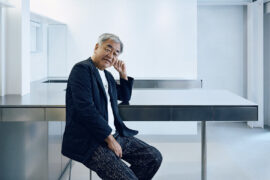
In a wide-ranging interview, the iconic Japanese architect joins Timothy Alouani-Roby to discuss his childhood home, the influence of Metabolism, a formative experience in the Sahara desert and a recent house by Mount Fuji.
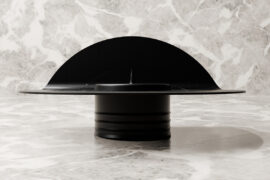
The FlexiFlange leak control flange is set to revolutionise the task of installing drainage systems alongside vertical surfaces like walls and floor junctions.
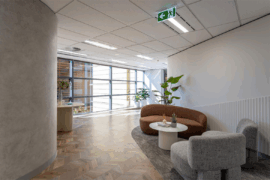
A thoughtful, low-waste redesign by PMG Group in collaboration with Goodman has transformed a dated office into a calm, contemporary workspace featuring a coastal-inspired palette and Milliken flooring for a refined finish.